28th October was my son Theo’s birthday and I made him a dinner of all the things he loves: a tricolori salad, foie gras (duck have no gag reflex as their necks are designed to swallow large spiky fish so gavage doesn’t hurt them), fresh anchovies, confit de canard and cherries. Minako poured the wine.
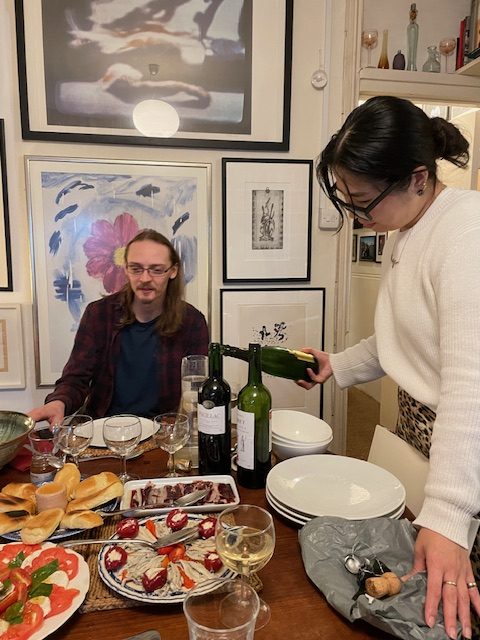
It was followed on the 4th November by Simon Caulkin’s birthday. I have known him about 45 years. It was held at Lemonia, a Greek restaurant in Primrose Hill. My friend Valerie, who I stayed with in Rome in the spring, was there as she is another old friend of Simon’s. Here she shows that she is half-French in conversation with Minako.
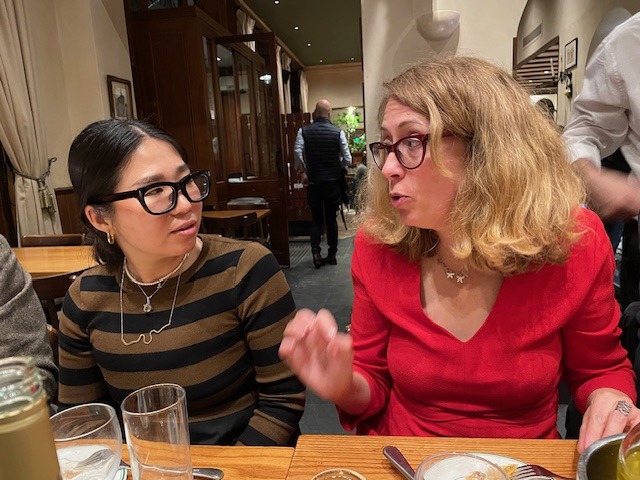
The third picture here is completely gratuitous. I found it on the web. It is the last known picture, supposedly, of Paul McCartney and John Lennon together. Taken on March 29, 1974 in Los Angeles it shows May Pang, front, John Lennon far left, Paul McCartney, Linda McCartney and Harry Nilsson. I think it was taken by Mal Evans, whose autobiography of his time with the Beatles has just been published.

Then, on the 9th, I made my first visit to Lisbon where I stayed with my friend Camila who had only just returned from a long weekend in London. I was impressed and scribbled down my first impressions:
The cobblestones. The contrast between the shining iron tram tracks cutting through the square white marble cobblestones that immediately reminded me of Marcel Duchamp’s ‘Why Not Sneeze Rrose Sélavy?’ [1921] with its 152 white marble cubes, like sugar lumps, in a white painted metal birdcage.
The hills. A rollercoaster of white cobbles, catching the sun like the crests of sea ripples glinting at day’s end. Like a child’s square building blocks.
The tiles. Entire house fronts of textured colour, sometimes a figure entombed in a cartouche but mostly vibrating symmetrical patterns of intricate interlocking shapes. I love tiles and in the Calouste Gulbenkian Museum they have superb collection of. 16th c Iznik tiles from Western Anatolia that I spent some time examining. Also worth seeing is Gulbenkian’s collection of Lalique.

San Francisco could have been like this but instead they imposed that wretched, mindless, American street grid on even the steepest hills, ignoring the topography, and ruined forever the chance to make it a world class city.
Each morning we would go to a museum, followed by lunch, usually in the museum. Then we would wander around the old town, seeing the sites. As an ex-editor of Time Out I felt I should see the Time Out Market, one of their most successful franchises.

The most amazing picture I saw in Lisbon was the Triptych of the Temptation of Saint Anthony (c1501) by Hieronymus Bosch at the Museu Nacional de Arte Antiga. I love way he so accurately depicts the weirdness of the medieval mind, and this one has dozens of vignettes each of which deserves careful study. I was delighted by it. I particularly liked the little fellow in red.
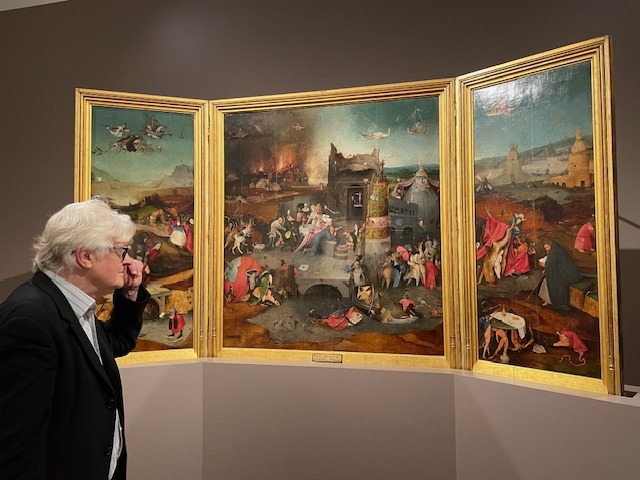
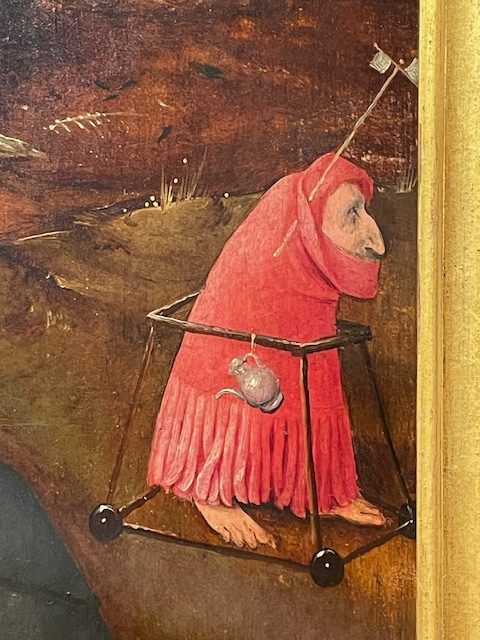
Lisbon, like San Francisco, is built on hills which have been amply provided with viewpoints and panoramas of the city and the river. There is usually a convenient bar located there too and one of the most pleasant things in the world is to stroll from one viewpoint to another, tasting the local wine as you go. It is also essential to try a glass of ginjinha, a liqueur made from Morello cherries in Estremadura. Very tasty. I first heard of it from watching Anthony Bourdain’s No Reservations programme on Lisbon where he does appear to genuinely get drunk from it. https://www.youtube.com/watch?v=p3UEo5XKFt8
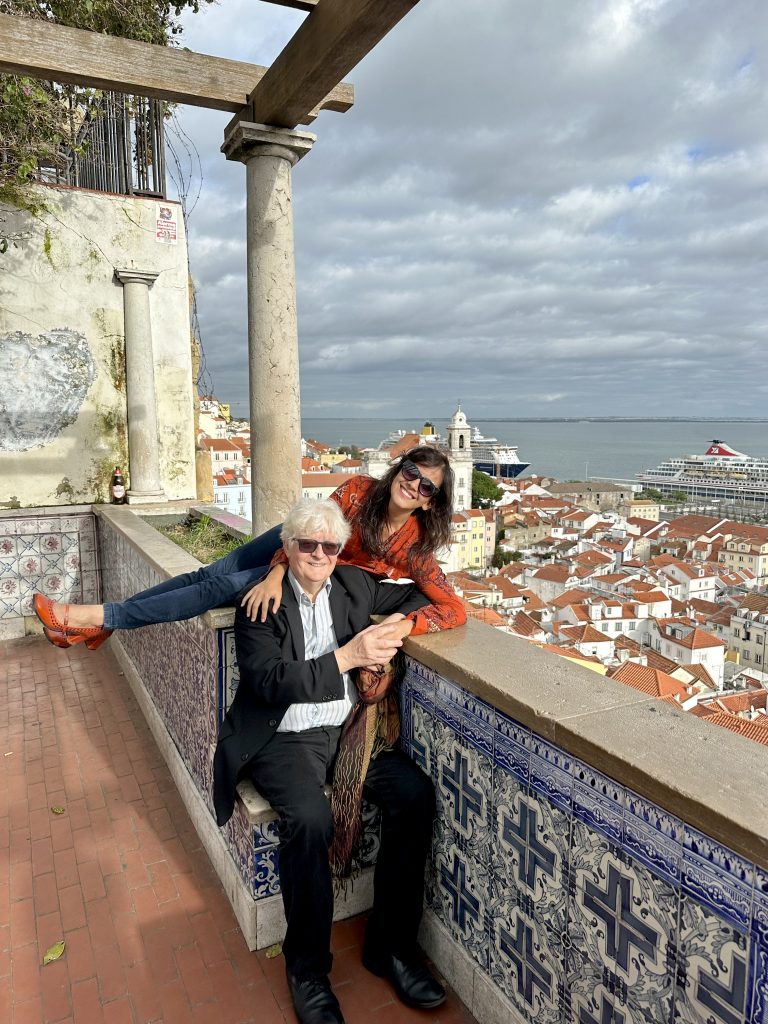
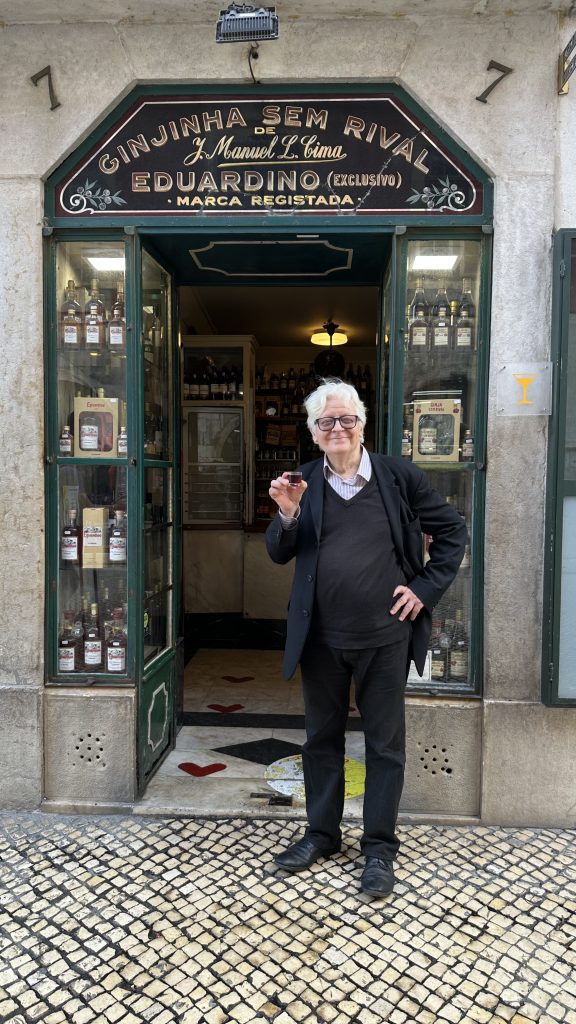
I had not known that the world’s oldest bookshop was in Lisbon until Camila took me there. As an ex-bookseller myself it was encouraging to see a shop that had managed to remain in business so long. Livraria Bertrand was founded in 1732 and though there are now 58 other branches nationwide, the original shop still has the right smell and a pleasant atmosphere. It moved to this location in 1773 after the earthquake. The picture shows the famous white pavement cobbles and the tiled building facade.
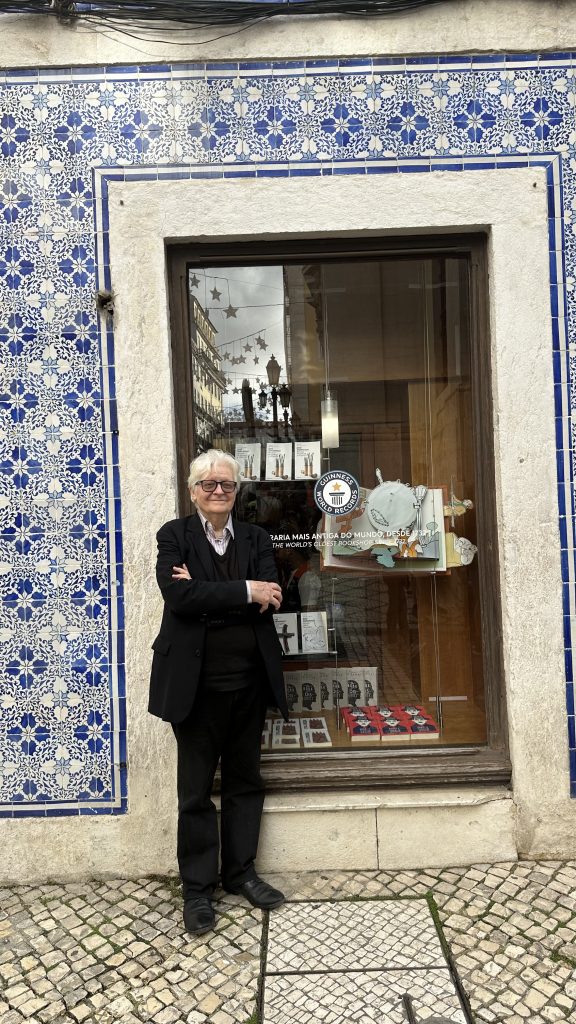
Lisbon is a beautiful city, with countless unexpected vistas that sometimes end with the light of the river or are animated by a moving tram. The riverside allows huge vistas and many of the industrial buildings have been repurposed as galleries, shops or markets – like the Time Out one. It seems to be a very young city, filled with youthful energy. The downside of this being that young people from all over the world have moved there, able to work remotely on their computers they have realised that living in beautiful Lisbon, with its architecture, wonderful food and wine, and cheap prices for everything except rent, is preferably to the freezing winters of Chicago or New York, Berlin or Amsterdam. Unfortunately their presence, plus the plague of AirB&B, has virtually doubled rental prices.
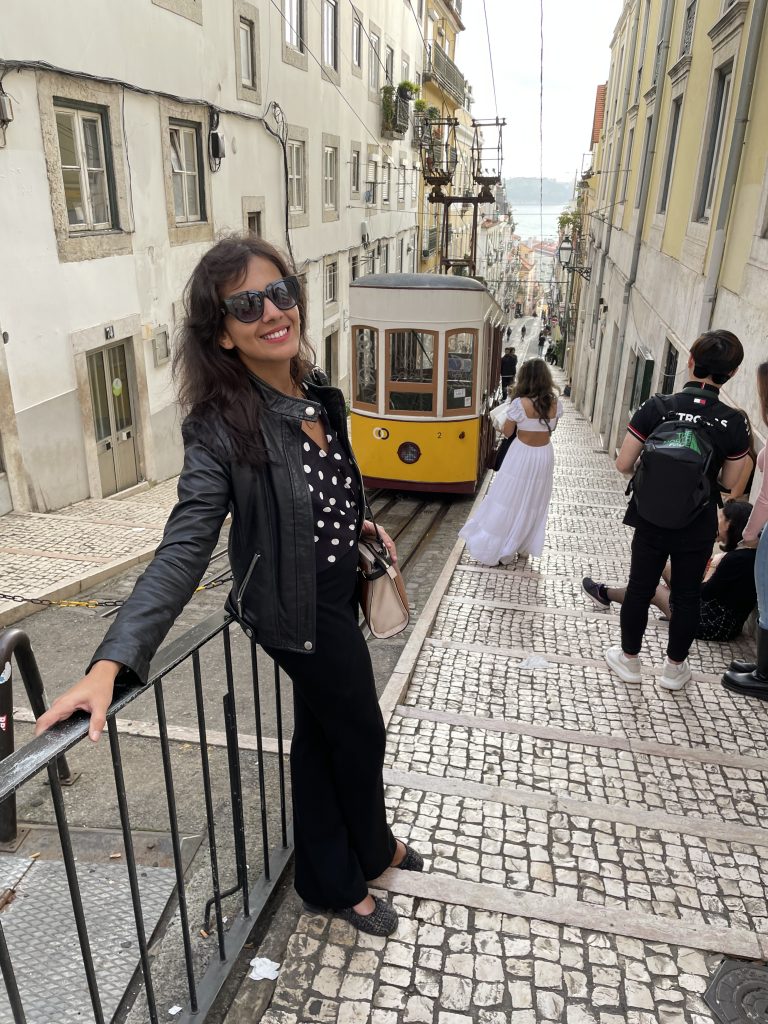
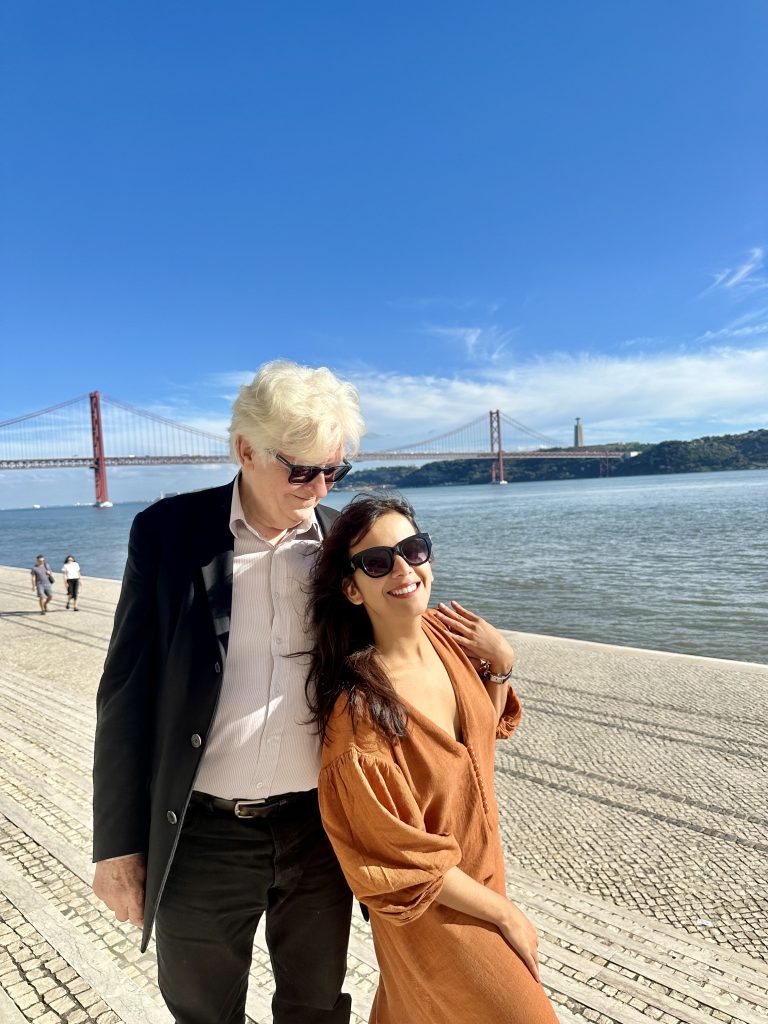
Camila followed me back to London a few days later to see a concert and record producer and manager Joe Boyd came to dinner. As the producer of the Pink Floyd’s first single, all of Nick Drake’s records, early Incredible String Band and Fairport Convention albums he is an integral part of sixties British rock ‘n’ roll history. He has just finished a seven-year survey of World Music which, inexplicably, has now to be called Global Music. I have known him since the early sixties. Here are the usual suspects disporting themselves: Camila, me, Minako, Theo and Joe. That is an ISB album on the coffee table.
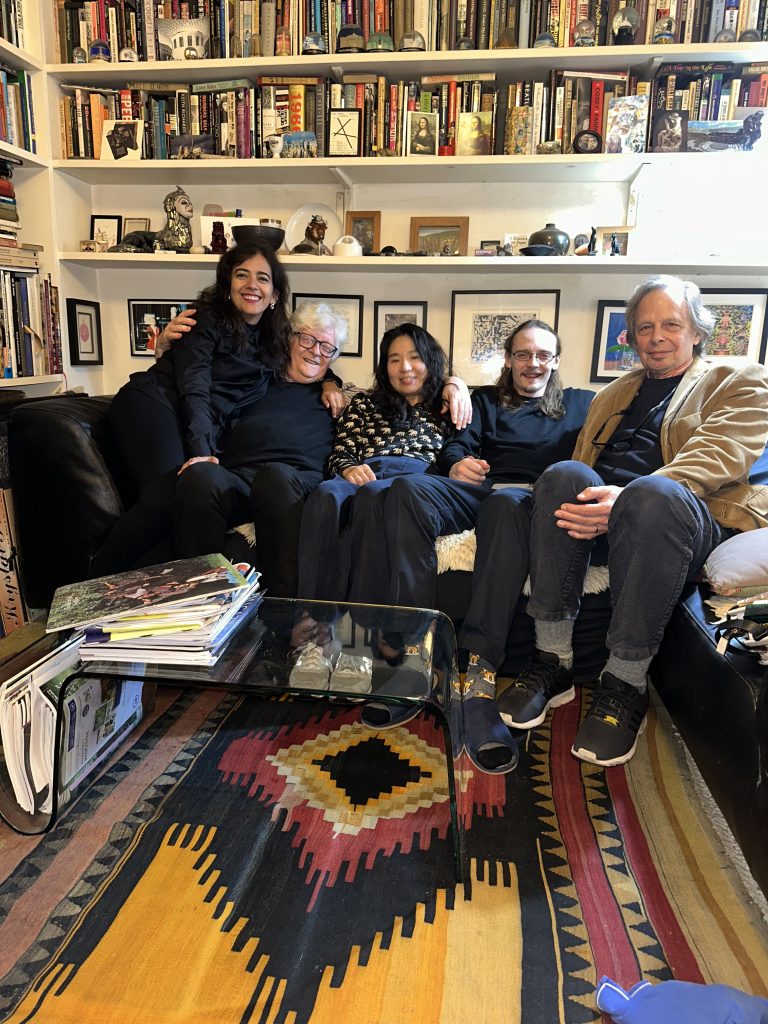
And finally, an attempt of a much more sober portrait of dinner, this time with Hannah from the T. J. Boulting Gallery, and her partner Biscuit. Her show of Lee Miller photographs had just opened.
